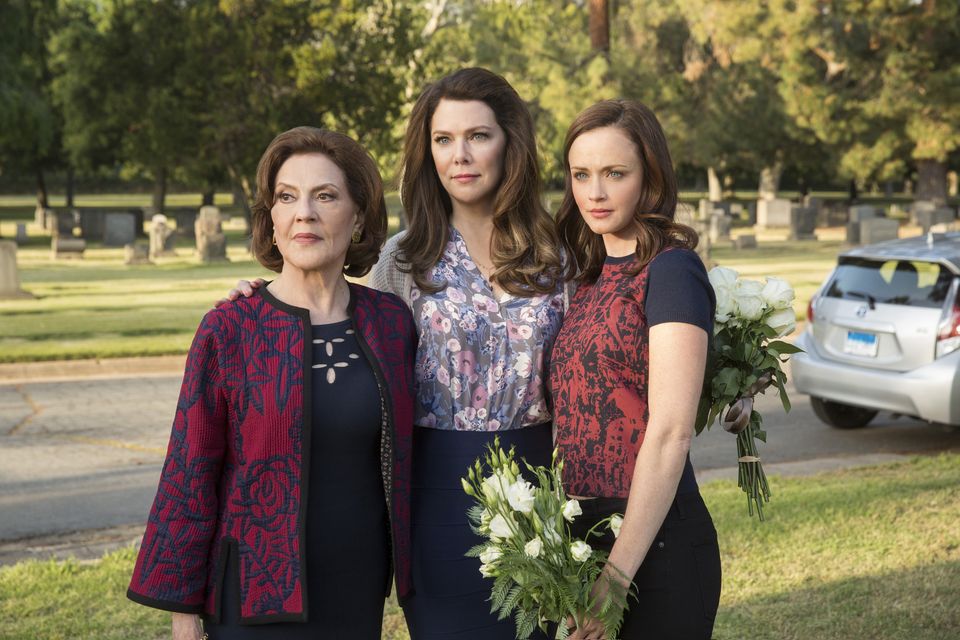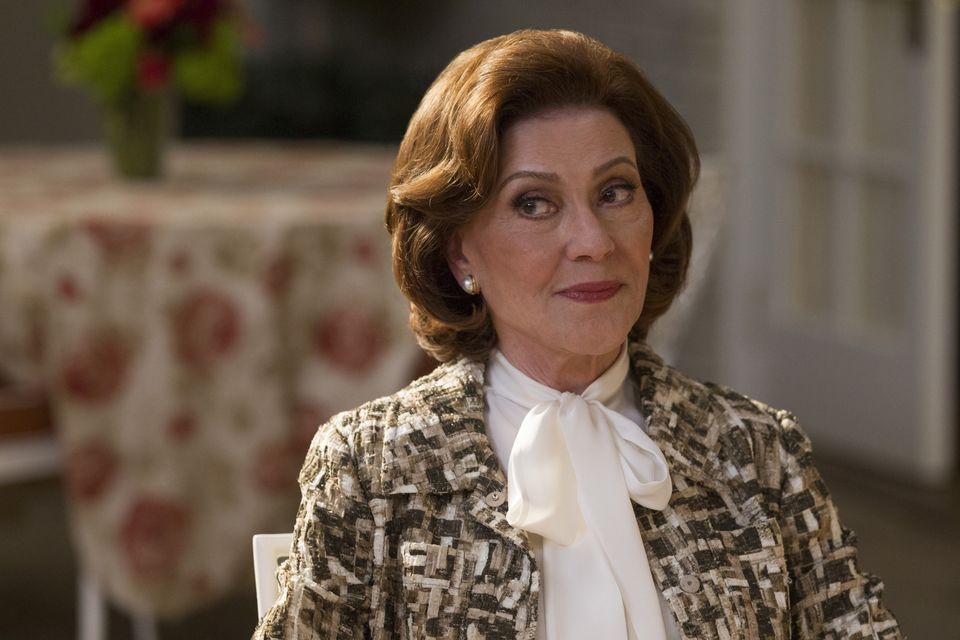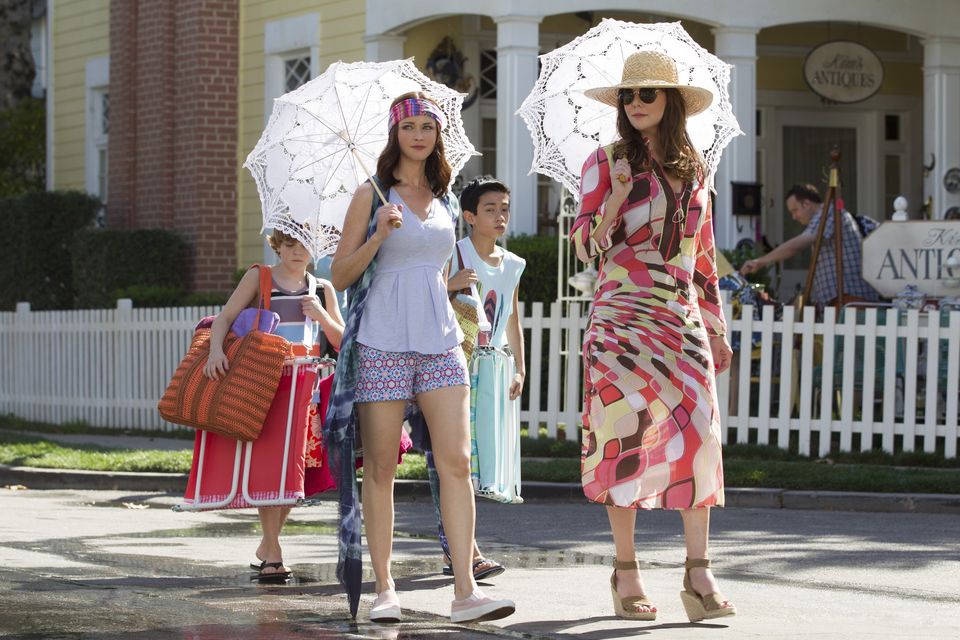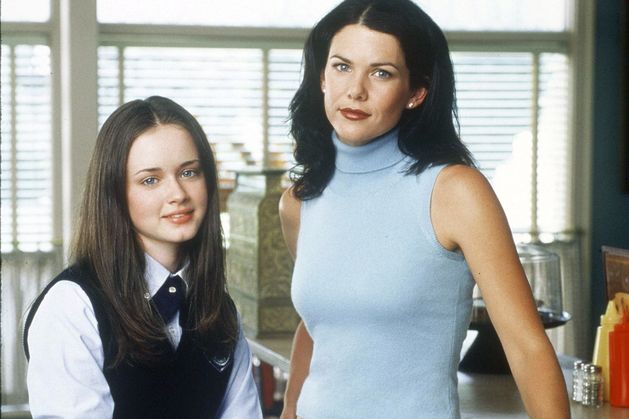It’s autumn, or as some people say, Gilmore Girls season! The fictional town and community of Stars Hollow, and the characters of the Gilmore Girls – Lorelai, Rory and Emily – still resonate with viewers, many of whom are drawn to the show and rewatch it at this time of year, every year
Despite the show’s relative lack of awards recognition, its stars Lauren Graham and Alexis Bledel reunited on the Emmys stage last month, complete with a recreation of their characters’ iconic front-porch set, an acknowledgement of Gilmore Girls’ enduring popularity.
Today marks 25 years since its debut, and the charming family drama has continued to capture the hearts of generations of viewers. Many, like 21-year-old Niamh O’Loughlin, a PR and media student at SETU Carlow, weren’t even born when the pilot aired.
“I’ve been a fan since I was 14, and I always think back to the first time I watched it: coming home, getting cosy in bed and watching Gilmore Girls. It was just the nicest, most comforting thing and it was something I really looked forward to in the evenings all through school,” she says. “I’d say I’ve rewatched it about 10 times. Especially during lockdown, I kind of had it on a loop.”
As the leaves fall and the evenings draw in, TikTok and Instagram are brimming with fan videos, gearing up for yet another return to the fictional Connecticut town of Stars Hollow. “This is the time of year that people go, ‘Oh, it’s Gilmore Girls season’,” observes Dr Jessica Shine, a lecturer in media communications at Munster Technological University. “There’s a cyclical nature to people’s rewatching.”

The three Gilmore Girls – Emily, Lorelai and Rory. Photo: Netflix
The show’s association with autumn is largely due to each season beginning with Rory’s new school year — not to mention all of the cosy knitwear, harvest festivals and beautiful foliage. Carolin Maienborn (22), an environmental engineering student at Trinity College, notes that it provides a welcome counterpoint to the end of summer.
“The weather is getting worse, it’s getting darker and college is starting again. [Gilmore Girls is] a little light point in this slightly depressing time of year,” says Maienborn, who hosts regular campus screenings of Gilmore Girls as a Trinity Global Room ambassador.
When ratings juggernauts like Judging Amy – first broadcast in 1999 – have largely faded into obscurity, what has given Gilmore Girls such staying power? For many, it’s the ultimate escapism, with fans emphasising the immersive quality of the series.
“I watch it and I just dive into this new world. I don’t know how they do it, they just pull me in and I feel like I’m in Stars Hollow. Maybe it’s the characters, the storylines, the cinematography, but I just forget about everything else in my life,” says Laura Kelly (24), a radio journalist. “That’s why I always go back to it, because it’s just so comforting.”
Shine raises film theorist Richard Dyer’s writing on entertainment and utopia, and how Gilmore Girls fulfils many of the “utopian solutions” he outlined to various social tensions and inadequacies.
“Our real life is exhaustion, scarcity, dreariness, isolation, but then utopia is the opposite of that, where you’ve got abundance, energy, intensity, excitement and community. I think if you look at Gilmore Girls, it is utopia, effectively,” she explains. “They eat take-out every night of the week, they know everything about everything, they’re never short of friends or community, there’s always a festival going on. It becomes this idyllic place to live. I think there’s a lot in it that people love to revisit, because it’s so comfortable and it feels like a little bit of home.”

Kelly Bishop plays Emily Gilmore in Gilmore girls. Photo: Netflix
Helena Thiel (21), a history student at Trinity College, describes Gilmore Girls as feeling like home. “It feels almost like you’re part of the town, when you know all the characters and it feels so familiar,” she says. “You get to be part of a community that maybe you don’t have in real life.”
Although the series is set in America, international viewers still find points of connection — O’Loughlin notes that it resonates with her own experience living in a small town on the outskirts of Kilkenny. “My granny actually ran a post office in our local community until 2009, so having that kind of community in the show was something that I was really drawn to,” she explains.
Thiel, meanwhile, grew up in a small town in Sweden, and says of Stars Hollow: “It’s something that I long for, and that other people long for, where it’s a walkable community, everyone knows everyone in the town and there’s a very strong community feel. You can see how Rory, especially, was raised by a village, and she knows everyone, so it starts to feel very familiar for the viewer as well. Even through her work [as a hotel manager], Lorelai is connected to her own community in a way that people aren’t really nowadays.”
Diane Negra, professor of film studies and screen culture at UCD, has written about how the series tapped into the trope of female “retreatism”, alongside contemporary films like Sweet Home Alabama and Hope Floats, where the heroine abandons the pressures of modern life for an idealised “hometown” — or an adopted one, in Lorelai’s case. Today, we’re seeing that retreatist impulse emerge again in response to turbulent economic and social conditions; think of the romanticisation of small town life and domesticity in popular culture and online, from hit TV series like Virgin River to social media “aesthetics” like cottagecore.
“Gilmore Girls’ depiction of Stars Hollow as a familiar and supportive community seems key to its appeal,” Negra observes. “The series’ picturesque aesthetics and tendency to simplify class and wealth differences position it as antidotal to a society that is being remade by the kleptocratic transfer of wealth to elites and the precarisation of the middle class.
“Connecticut is a state with a high cost of living, and dramatic class and wealth polarisation between post-industrial cities like Bridgeport, Hartford and New Haven on the one hand and pockets of extraordinary wealth as in Greenwich which is now a centre for hedge funds — but Gilmore Girls knows nothing of this. Here, working-class and middle-class jobs provide seemingly secure and sufficient incomes for everyone in town.”
The series offers an idyllic vision of local politics, too: Negra raises Stars Hollow’s weekly ‘town meetings’, where residents discuss and vote on community issues. “The series’ sense of democracy fostered through ‘town meetings’ may be one of its most important nostalgic features in a time when stark political differences mark the American landscape,” she points out.
Originally from the suburbs of New York, Zoe Patterson (27) is a PhD candidate in English at Trinity College, and says she sometimes finds the show’s politics puzzling. “[Stars Hollow] definitely feels like something that, in my experience, doesn’t exist in the US,” she says. “I can’t speak for the entirety of the US, but it’s hard to believe that there would be this level of co-operation and unity in a town. Differences aren’t acknowledged in the same way that they are in real life. The politics of [Gilmore Girls] have always been weird for me, because it does seem like a very nice way to live, but it also feels like sometimes the show is ignoring the politics of the real world as well.”
The notion of the ‘small town’ is a potent one in American politics. “It’s been a thing for at least a few decades now that all of America’s political tension is focused on small towns and rural America — you know, those are the people the politicians care about,” Patterson says. “I’m always very mindful that this is mostly a Bush-era show.”

Alexis Bledel and Lauren Graham on screen as Rory and her mother Lorelai. Photo: Netflix
Throughout the show’s entire run, President George W Bush is only mentioned a couple of times, as a punchline.
“I think it’s really apolitical, which is really interesting,” Shine adds. “It is set in the Noughties in lots of ways — there are flip phones and digital cameras — but on the whole, it’s really timeless. Teenagers fall in love, teenagers go to school, teenagers feel under pressure to go to college; all of those things are timeless, and I think that attracts people.”
Gilmore Girls concluded a month before the first iPhone was even released, and fans note that the absence of always-on technology adds to its timeless quality. “A lot of it does resonate with me today, but it feels inherently different as well, because it’s pre-iPhones, social media, all that,” Patterson says.
“I think it’s a nice kind of escapism to watch something that is modern enough to feel relatable, but not modern enough to remind you of all the overstimulation of 2025. I think it’s that sort of sweet spot before things got really crazy in terms of the internet and stuff.”
“Even within the town, they almost resist certain technological advancements that happened around that time, like the fact that Luke doesn’t want any mobile phones in his diner, or that Lorelai prefers a slower internet connection,” Thiel points out. “The show moves at a slower pace, and because it is so slow-moving, I think it kind of forces you to slow down a bit [when watching].”
Gilmore Girls is often described as a “comfort watch”, with fans returning to the series over and over. “I think I binge it at least once a year,” Kelly agrees. “It’s my comfort show. It’s such easy watching —you can pick it up whenever you want to.”
Dr Vincent McDarby, clinical psychologist from Access Psychology, explains: “There’s a cognitive ease aspect in comfort watching: familiar shows require less mental effort, so they’re shows you can half-watch when you’re making dinner or scrolling on the phone. You can go in and out without having to follow a complete plot.”
It’s not a new phenomenon, but it exploded during the lockdowns, with Gilmore Girls ranking among the top 10 most-watched shows on Netflix from 2021-2023.
“One thing we had with the pandemic was a huge amount of uncertainty, so comfort watching gave people a sense of stability and familiarity, and it was at a time when digital access really started to take off, so it was much easier to dip into our favourites,” he says, noting that familiar narratives can also help with emotional regulation. “Just like children want the same bedtime story over and over again — predictable characters and outcomes mimic secure relationships, so it’s often a way to regulate emotions.
“[With Gilmore Girls], it’s the 25th anniversary, so there’s going to be nostalgia there. When you return to shows, it evokes autobiographical memories and a positive effect. We know that nostalgia has been shown to buffer stress and increase feelings of social connectedness. So for a lot of people, it’s not rewatching a show, it’s revisiting old friends.”
For many fans, the rewatch ends with the finale of the original series; they prefer to pretend A Year in the Life, the four-part follow-on miniseries released in 2016, never happened. On its release, the revival became the fastest binged show on Netflix, but it presented an uncomfortable, unflattering vision of its leads. The 32-year-old Rory was an aimless, out-of-work journalist sleeping with her engaged ex-boyfriend, and forced to move back home with Lorelai, who was herself feeling stuck in her relationship and career.
The mood was markedly less warm and cheery, and the final cliffhanger, revealing Rory’s unexpected pregnancy, proved enormously divisive.
“It did some interesting things, notably depicting Rory and some of her Stars Hollow generational peers as unfocused and opportunity-deprived,” Negra observes. “In the sequel, Stars Hollow is less a launch pad and more of a flypaper town whose young people don’t or can’t leave. Rory’s poor life choices — especially her ongoing relationship with [ex-boyfriend] Logan — struck me as narratively courageous.”
The tone, Shine says, was the biggest problem for devoted fans: “It’s a bit grim, and that’s not what people wanted. They want joy and they want utopia when they’re watching Gilmore Girls.”
Kelly adds: “I always try A Year in the Life [during rewatches], but then I give up halfway through, because the ending really frustrates me so much.” That being said, she would “100pc” be on board with another reboot.
“I would like to see [Rory’s] life go in a better direction — we don’t want to see her couch-surfing and barely making it. We followed her since she was a child and thought she was gonna do great things.”
Gilmore Girls was initially funded by the Family Friendly Programming Forum, an initiative by America’s leading advertisers to create television “appropriate in theme, content and language for a broad family audience”. With characters ranging in age from 16-year-old Rory and her friends Lane and Paris, to Lorelai and her business partner Sookie, to grandmother Emily Gilmore, it had the effect of appealing to multiple generations, something Shine notes was built into the show.
“There’s three generations of women to identify with, and they kind of embedded that into the show so that mothers and their daughters could watch it,” she explains. “You identify with the characters in different ages of your life. I was a little bit younger than Rory when I [watched it] growing up, and then when you rewatch it, you’re Lorelai’s age, or you’re now Emily’s age, which gives it that longevity.
“It has really strong female characters of all ages, and also of all different types, like Melissa McCarthy’s Sookie, a chef, or Lane, the music nerd, and Rory, who’s just the nerd nerd. But then you’ve got Paris, who’s this intense, overbearing character, so there’s something for a lot of different personality types to relate to.”
O’Loughlin agrees: “I picked up on different things each time that I watched it, and it was the kind of show that really grew with me. The first few times I was watching it, it was the whole [school love triangle], and then when I was starting to get older, the college years became one of my favourite parts of the show. Now I’m in college myself, seeing Rory fail at things and seeing things not go her way, I’m able to liken that to my own life.
“I’d say, in the next few years of my rewatches, it’ll be Lorelai who I’ll be watching the show for. I think that’s so lovely about it, how you can grow with the show.”
